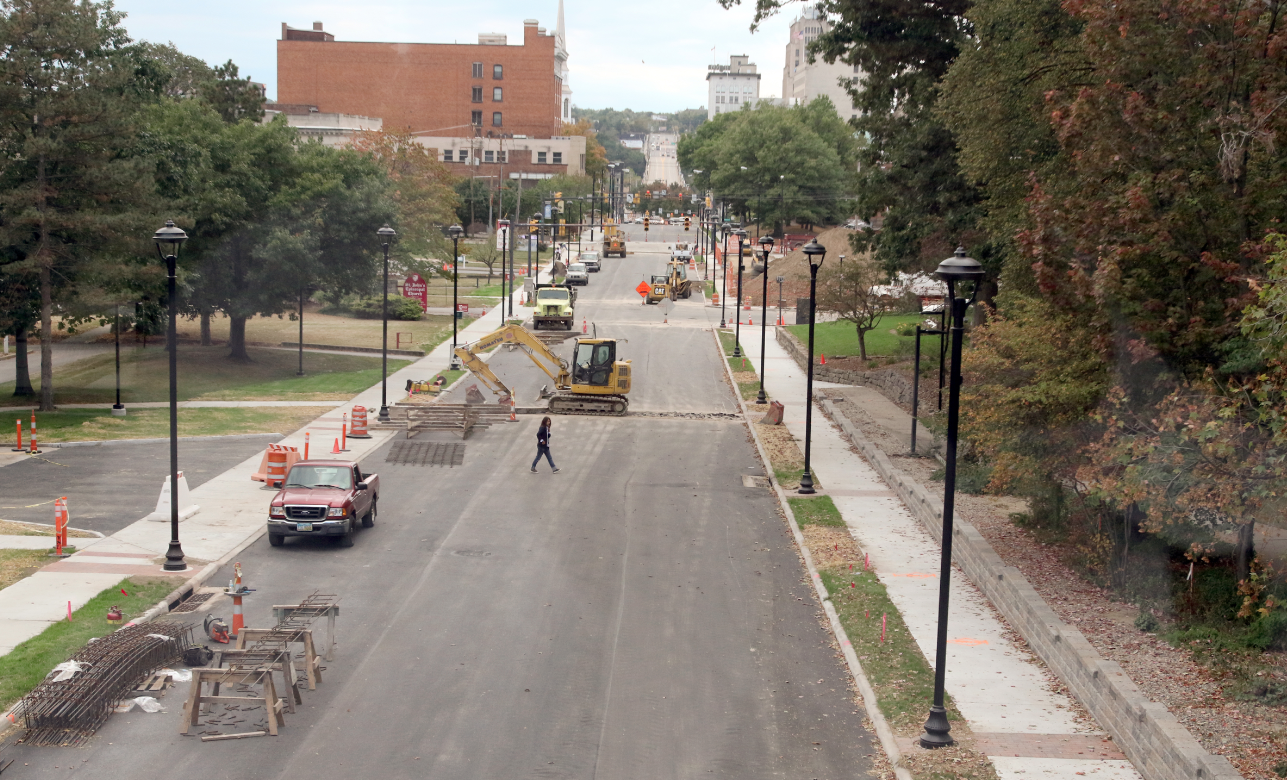If you are waiting for Wick to open, keep waiting

YOUNGSTOWN
It will be three to four more weeks before the Wick Avenue improvement project, which has closed one of the city’s main corridors for a year, is finished.
The closed road has caused headaches, particularly to those needing to go to and from Youngstown State University as well as the Butler Institute of American Art and the main branch of the Public Library of Youngstown and Mahoning County.
The delay was caused by “a lot of unforeseen things happening,” particularly underground utility wires and pipes, said Charles Shasho, the city’s deputy director of public works.
“They’re all underground and you think you know where they are, and when you dig, you find they’re somewhere else,” he said. “We had utility conflicts, pipes underground that we didn’t know were there, electrical conflicts. When you do a project downtown, these are problems you face.”
The project has closed Wick Avenue from Wood Street to McGuffey Road since late September 2016.
Shasho had said in early August that the project would be done by mid-September, a few weeks ahead of schedule.
Not only has that time come and gone, but the project’s original completion date of late September also is in the rearview mirror.
“It was supposed to be done by now,” Shasho said. “It will be done in late October. I don’t have a date yet. But it will be well worth [the delay]. It will look great when it is finished.”
The $4.5 million project includes paving, burying utility wires, widening sidewalks, new lighting, replacing a sewer line, replacing two waterlines with one, reducing the three-lane road to one in each direction with the middle being a turning lane, and new signs.
The only remaining work that needs to be done, Shasho said, is decorative concrete crosswalks.
The Wick Avenue project will serve as a model when the city does an improvement project on Fifth Avenue between West Federal Street and the Madison Avenue Expressway – and possibly farther north, he said.
That work would start in the spring of 2020, he said.
 43
43
